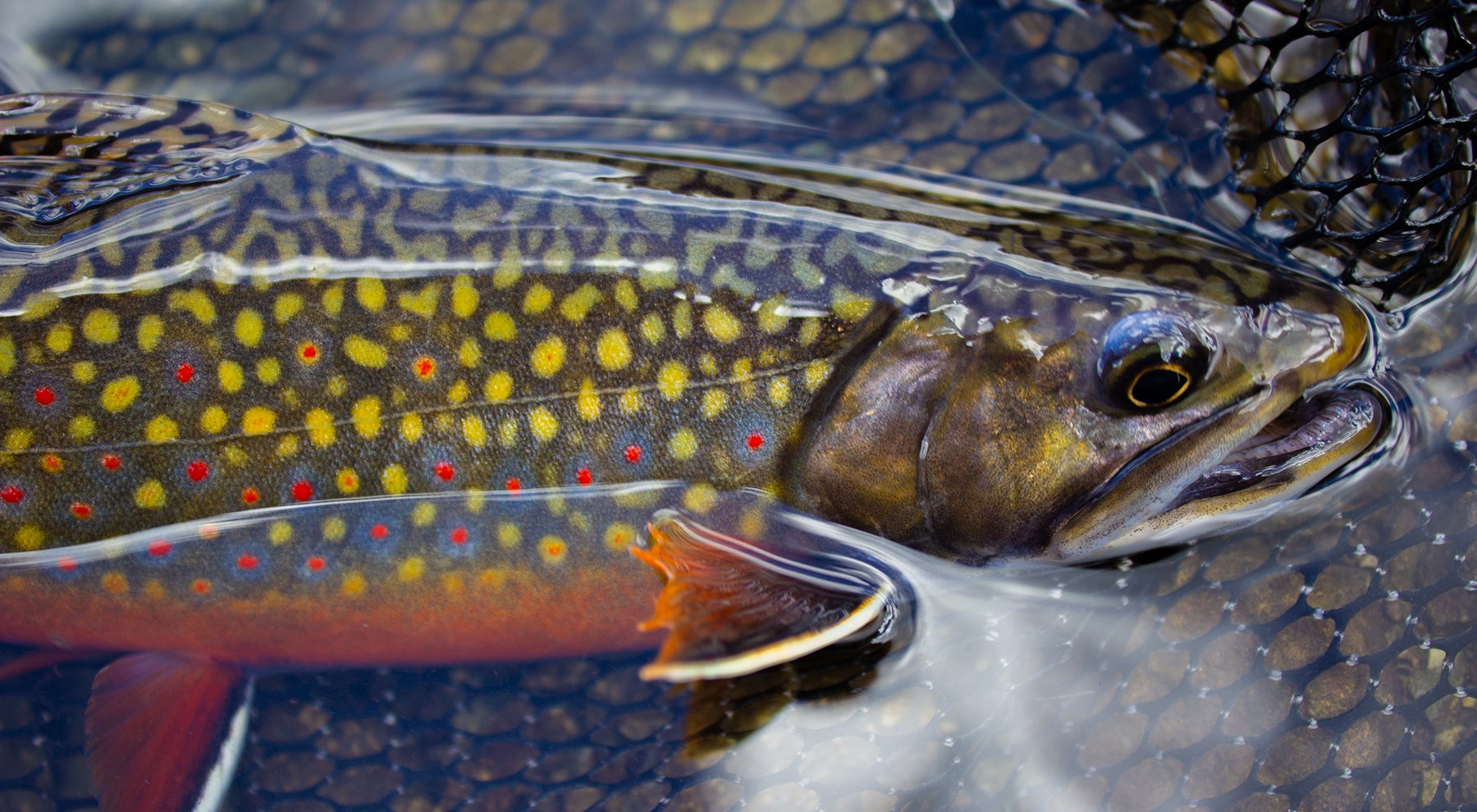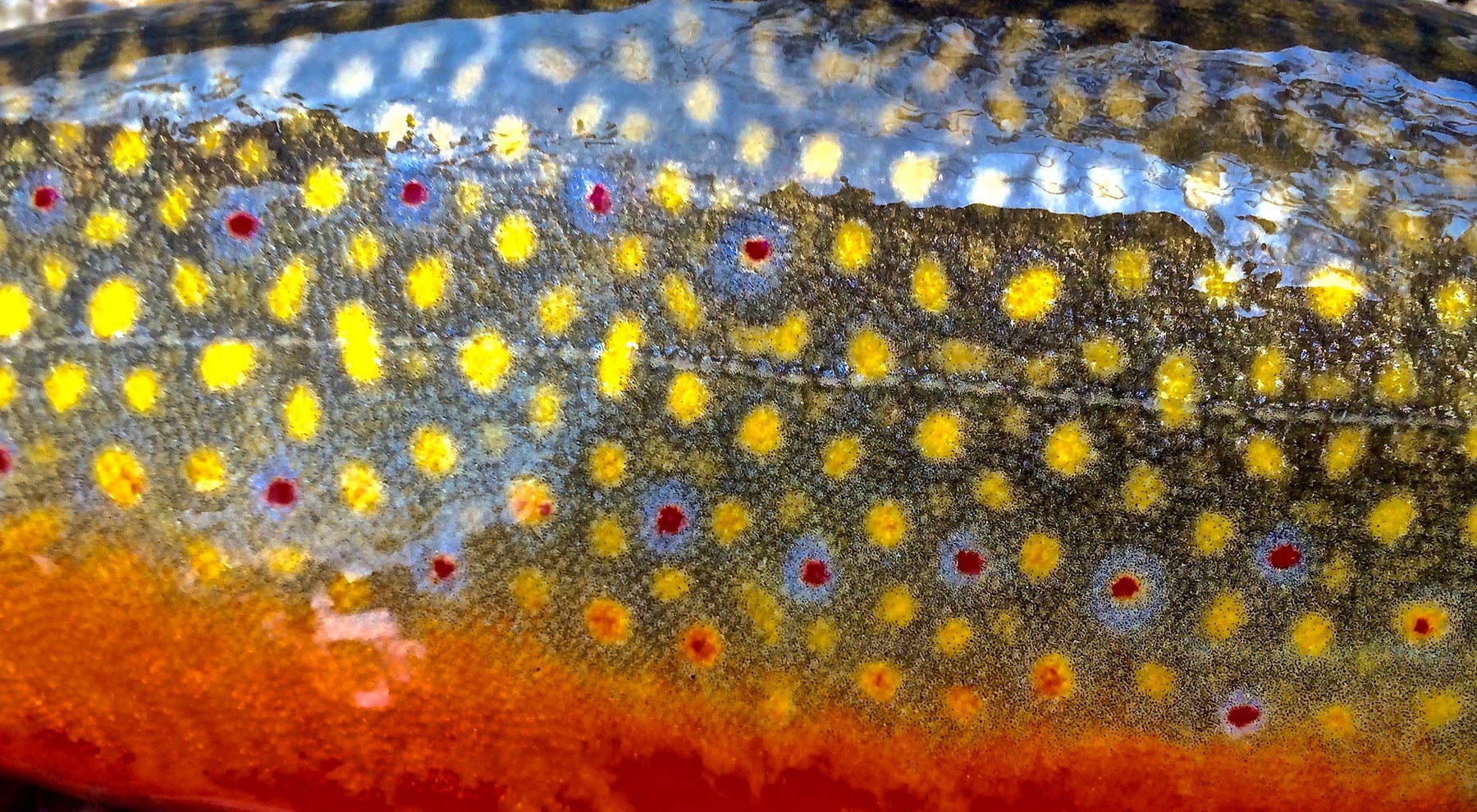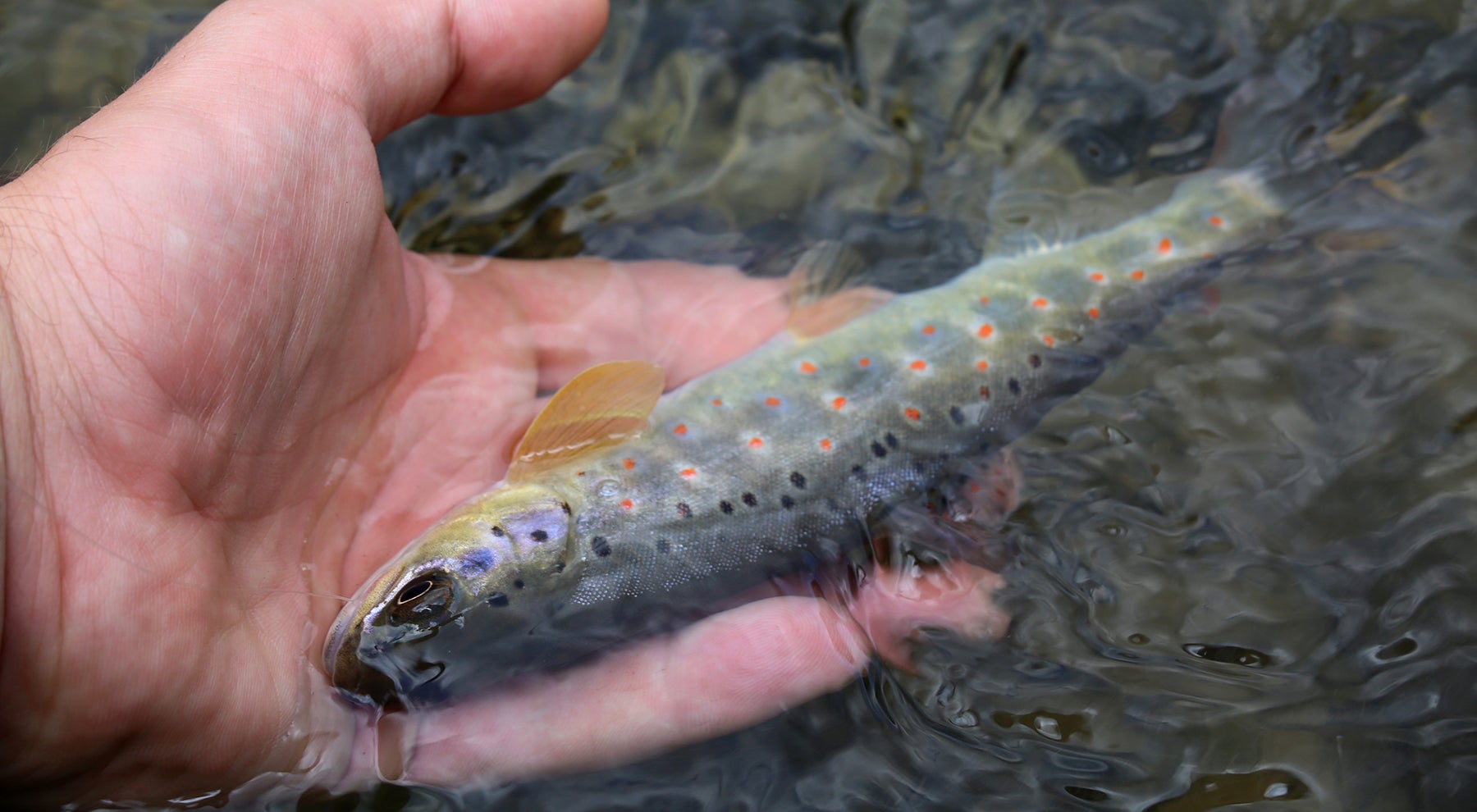Brook trout (salvelinus fontinalis) are members of the char family and indigenous only to the eastern United States. They were introduced to areas outside the eastern seaboard by the American Acclimatization Society and other similar organizations. That started around 1950, and brook trout were introduced into streams and lakes in Southeast Alaska between 1917 and 1950. Over the years, brook trout died out in many places, leaving reproducing populations only in a handful of lakes in Southeast, where they are considered an invasive species. Many of these lakes are accessible only by floatplane.

Brook Trout Identification
Brook trout in Alaska reach lengths up to 14 inches, with the average adult fish ranging from eight to 12 inches. The state record was 20 inches and was caught in 2012 in Green Lake, on Baranof Island near Sitka. They possess yellowish vermiculation markings along the back, which is a dark olive to greenish hue. They also have small red spots along the lower half of the body, which have pale blue halos around them, along with more prominent light yellow spots.

Brook trout prefer well-oxygenated cold, clear, silt-free water. They feed on all available forage in their habitats, including insects, leeches, small fry, and snails.
Brook Trout Distribution
Although brook trout were originally introduced to numerous streams in southeast Alaska by the thousands, it is believed that they reside only in a few lakes, where they are able to reproduce. Here is a list of lakes where brook trout are found.

Some mature brook trout retain their parr markings, the darker spots along the lateral line, as seen here.
Ketchikan Area
- Grace Lake
- Ketchikan Lake
- Shelokum Lake
- Perseverance Lake
Juneau Area
- Dorothy Lake
- Salmon Creek Reservoir
Hyder Area
- Emerald (Texas) Lake
Petersburg Area
- Crystal Lake
Sitka Area
- Deep Lake
- Green Lake
- Heart Lake
- Long Lake
- Thimbleberry Lake
Haines Area
- Rustabach Lake
Skagway Area
- Upper and Lower Dewey Lakes
Fly-Fishing for Brook Trout
Fly-fishermen should opt for light rods in the 1/2-wt. class, with floating lines and tippets ranging from 6x-4x. Flies should range from size 18 through 6, with barbless hooks. Flies should include caddis, mayfly, and stonefly imitations up to an inch long, with colors ranging from black to olive, dun, brown, golden, and yellow. Stick with sizes ranging from 14 down to 20. Terrestrials are also important; ants, beetles, caterpillars, and grasshoppers, ranging in color from black to brown. Baitfish imitations are also important; you’re imitating alevin, small salmon smolts, and sticklebacks.
Fly-Fishermen’s Brook Trout Tacklebox
- 4-5 wt. fast-tip rod, 5'-6’ length
- Orvis Clearwater Reel
- Rio Creek floating line
- Tippet: 6x, 5x
- Aventik Waterproof fly box (dry flies)
- Tacky Original fly box (streamers, nymphs, wet flies)
- Dry flies: Elk Hair Caddis, adams, black gnat, yellow sally, clark’s stone, stimulator
- Nymphs: Prince, bead-head prince, teeny nymph, hare’s ear, chubby chernobyl,
- Baitfish imitations: Wooly bugger, Clouser minnow, muddler minnow, alevin
- Other patterns: Polar shrimp, glo-bug
Spin-Fishing for Brook Trout
The key for spin-fishermen is to go light. Alaska’s brook trout are small and fight well on light tackle. Line heavier than 6-pound is likely too heavy. Spinners, spoons, and flies all work well, but remember that the bulk of a brook trout’s diet is insects. A bubble float with a light tippet is ideal. Cast along shoreline vegetation and structure where baitfish are found for the best results.
Spin-Fisherman’s Brook Trout Tacklebox
- Okuma Ceilio 5-6 1/2’ ultralight-action rod
- Okuma Ceymar Spinning Reel
- Line: 4#-6#
- Spinners: Mepps black fury, Mepps Agilia, Panther Martin Classic, Vibrax, Rooster Tail
- Spoons: Kastmaster, Little Cleo, Acme Phoebe, Daredevle, Super Duper
- Swivels
- Water Gremlin Splitshot
- Bubble Floats
- Sling fishing tackle bag
- Plastic tackle compartment boxes





















